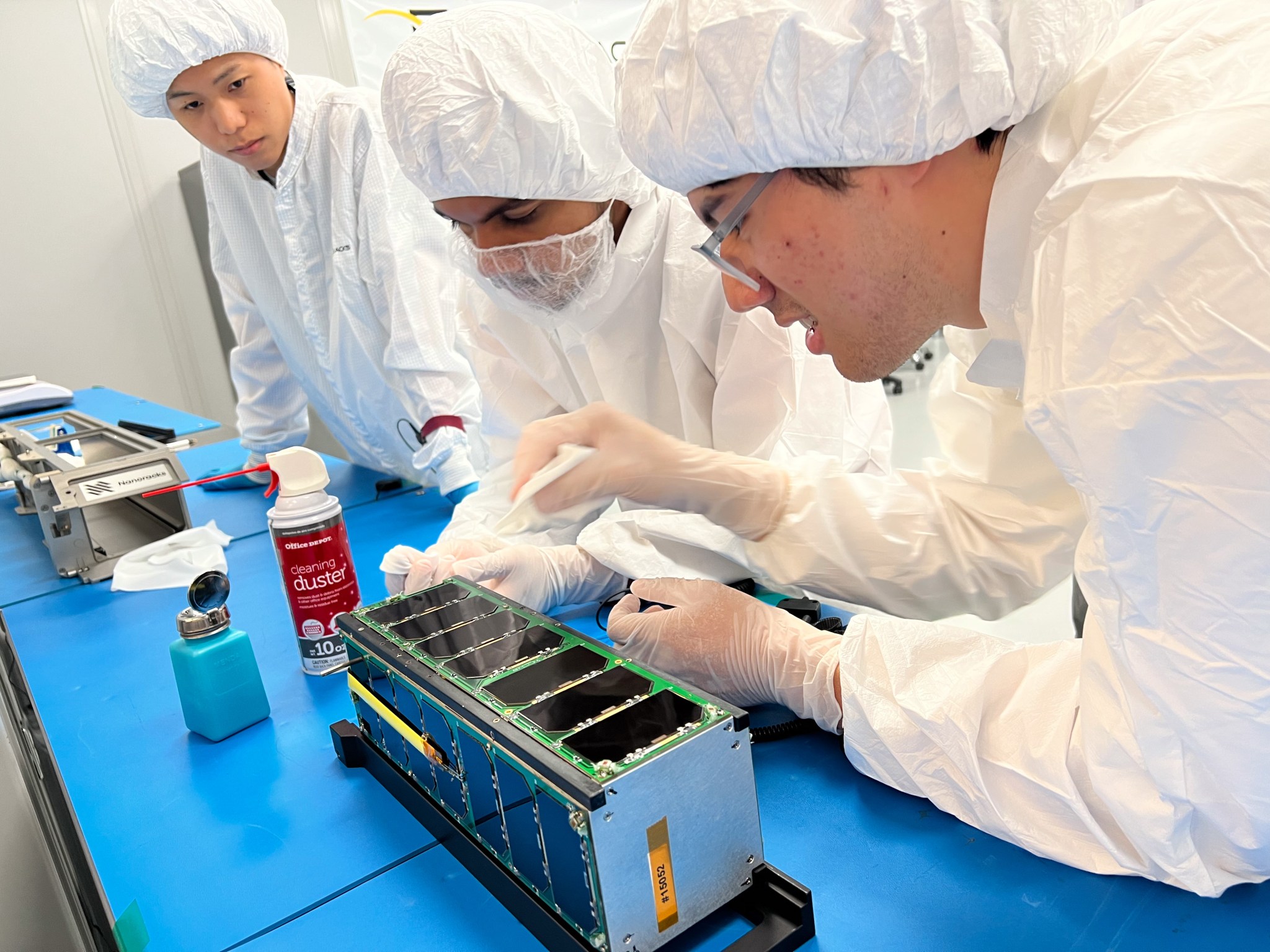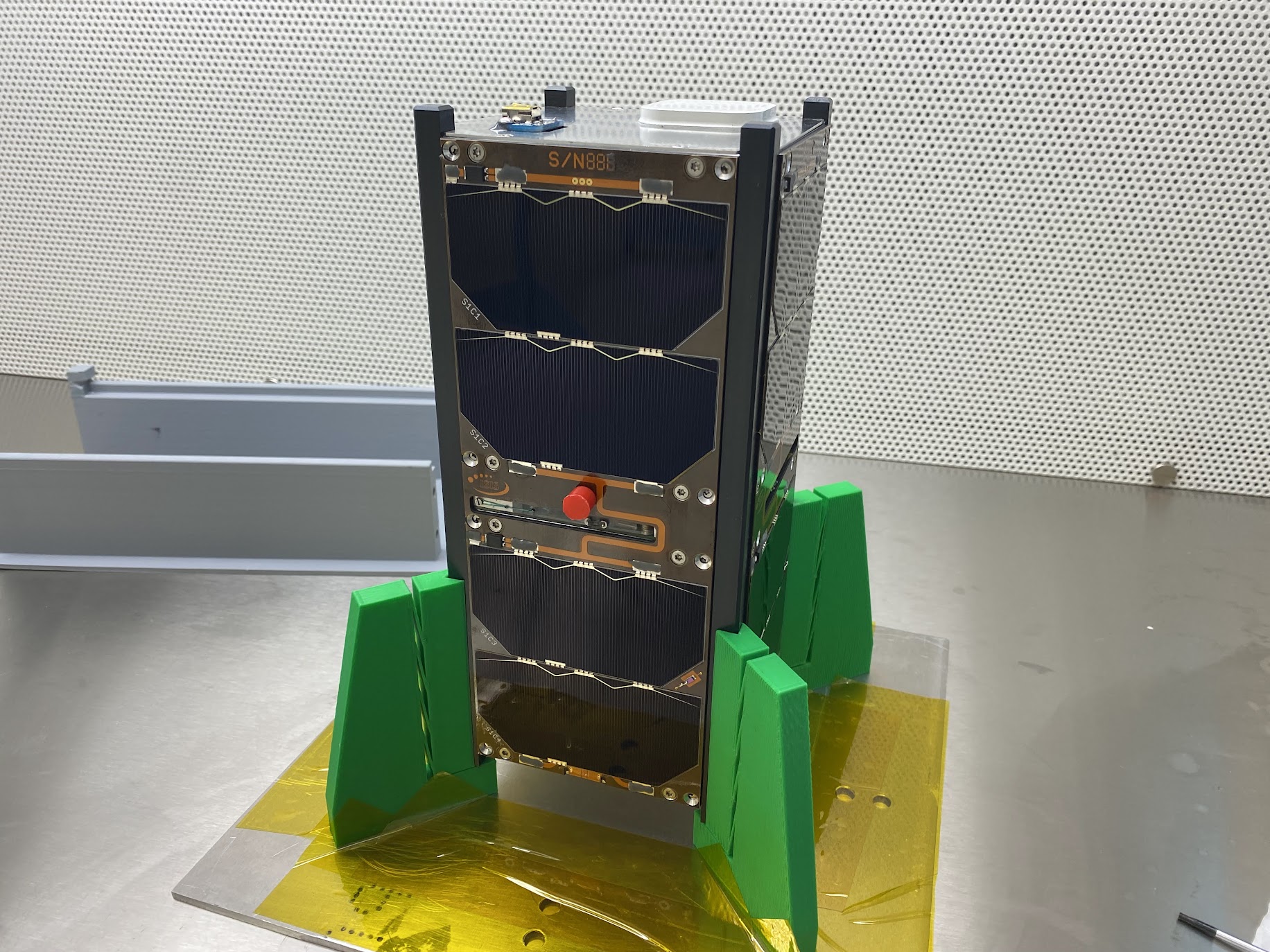
NASA selected 10 small research satellites across eight states to fly to the International Space Station as part of the agency’s efforts to expand education and science opportunities, support technology advancement, and provide for workforce development.
These small satellites, or CubeSats, use a standard size and form measured in units. One unit (1U) is 10x10x11 centimeters and allows for the modular design of larger CubeSats measuring up to 12U. CubeSats encourage greater collaboration across government, industry, and academia because they are modular and inexpensive to build and launch. The small satellites allow for rapid development and provide a cost-effective means for science investigations and technology demonstrations in space.
This year’s selections include the first project from Delaware, three from minority serving institutions, and a submission from a K-12 school. New participants include the University of Delaware, Oakwood School in California, California State University, Long Beach, California State Polytechnic University, Pomona, and the University of Chicago.

NASA’s CubeSat Launch Initiative (CSLI) selected the missions, currently planned to launch in 2025 to 2028, in response to a call for proposals on Aug. 7, 2023.
The complete list of organizations and CubeSats chosen during CSLI 15th selection round are:
- University of Louisiana at Lafayette – CAPE-Twiggs (Cajun Advanced Picosatellite Experiment) will serve as a first prototype of a 3U CubeSat designed to contain and launch tethered SlimSat modules into very low-Earth orbit. Having launched successful CubeSat missions in the past, the university’s current project will work with several other schools with little or no experience on the design, build, and operations of their own SlimSat module. CAPE-Twiggs will enhance both STEM education and the ability to conduct regular and collaborative space-based experiments on a larger scale.
- Oakwood School in California – NyanSat is a 2U CubeSat designed and built by a K-12 independent school in rural California. This mission will serve as template for educational outreach and space technology development. NyanSat features several technology development payloads, each designed to test and demonstrate the efficacy of various new systems in the space environment. Included among these are the acoustic spacecraft mapping and sounding payload, aimed at simplifying sensor architectures in spacecraft and providing supplementary mission information, and the cryptographic ledgers in space payload, intended to verify the feasibility of space-based digital notaries for on-Earth and in-geospace transactions.
- University of Hawaii at Manoa – CREPES (CubeSat Relativistic Electron and Proton Energy Separator) aims to study solar energetic particle events and increase our knowledge of the Sun. CREPES will fly a new type of micropattern gaseous detector using gas electron multipliers to amplify the signals of radiation. Data obtained from these measurements is expected to contribute to the understanding of space weather and development of space climatology. The University of Hawaii at Manoa is a minority serving institution and has previously launched a CubeSat with the program.
- California State University, Long Beach – SharkSat-1 seeks to monitor LED-induced blue light pollution across Earth. LED lights are popular due to their cost efficiency, but their impacts are currently being studied by climate and health researchers. Data collected by SharkSat-1 will create a database for experts to create light pollution maps. California State University, Long Beach, is a minority serving institution.
- University of Delaware – DAPPEr (Delaware Atmospheric Plasma Probe Experiment) will map average variations in electron density and temperature versus latitude and time of day in the ionosphere’s F2 layer. Another objective is to determine the preferred size for a Langmuir probe to measure ionospheric electrons from a CubeSat. This is the first CubeSat selection from Delaware for CSLI and aims to provide students with hands-on learning experiences on flight systems.
- Saint Louis University – DARLA-02 (Demonstration of Artificial Reasoning, Learning, and Analysis) will demonstrate autonomous event response on a 3U spacecraft and create a dynamic map of the radio frequency background noise in the amateur ultra-high frequency band. DARLA-02 follows DARLA, which is targeted to launch with CSLI in 2024. This follow-up seeks to double the amount of time the spacecraft can be in science mode in orbit.
- California State Polytechnic University, Pomona – The Pleiades Five mission will be the first to use a commoditized CubeSat architecture to provide effective and sustainable educational opportunities for future generations of the space industry. California State Polytechnic University, Pomona, will partner with five other universities and offer a pathway enabling students to design, test, launch, and operate a low-cost educational 1U CubeSat within one academic year. California State Polytechnic University, Pomona, is a minority serving institution.
- University of Chicago – PULSE-A (Polarization modUlated Laser Satellite Experiment) will demonstrate a way to increase the speed of space-to-ground communications. PULSE-A also aims to make space-to-ground operations more difficult to intercept and jam through an on-orbit tech demonstration. PULSE-A will use 10 Mbps polarization-keyed laser communications instead of radio frequency for a space to Earth call. Free-space optical communications improves on power, bandwidth, and effective data transfer rates over radio frequency.
- Utah State University – GASRATS (Get Away Special Radio and Antenna Transparency Satellite) will demonstrate a novel transparent patch antenna integrated on top of a solar panel. Having a dual-purpose use of the external surface of a satellite and combining power generation with communications capabilities, tackles the common space mission constraints of power and mass limitations. Utah State University has previously participated in CSLI, deploying GASPACS (Get Away Special Passive Attitude Control Satellite) in early 2022 to test inflatable structures in space.
- NASA’s Marshall Space Flight Center – GPDM (Green Propulsion Dual Mode) will test chemical and electrospray capability of the low-toxicity or “green” rocket propellant known as Advanced Spacecraft Energetic Non-Toxic (ASCENT) during an in-space flight demonstration. The project is a partnership with the Massachusetts Institute of Technology and Georgia Institute of Technology to develop a chemical propulsion subsystem that will include a 3D printed tank, manifold, and propellant management device.
NASA has selected CubeSat missions from 45 states, the District of Columbia, and Puerto Rico, and launched about 160 CubeSats into space on an ELaNa (Educational Launch of a Nanosatellite) manifest.
The CubeSat Launch Initiative is managed by NASA’s Launch Services Program based at the agency’s Kennedy Space Center in Florida. For more information about CSLI, visit:
https://go.nasa.gov/CubeSat_initiative
from NASA https://ift.tt/d2aD6Y0


No comments:
Post a Comment